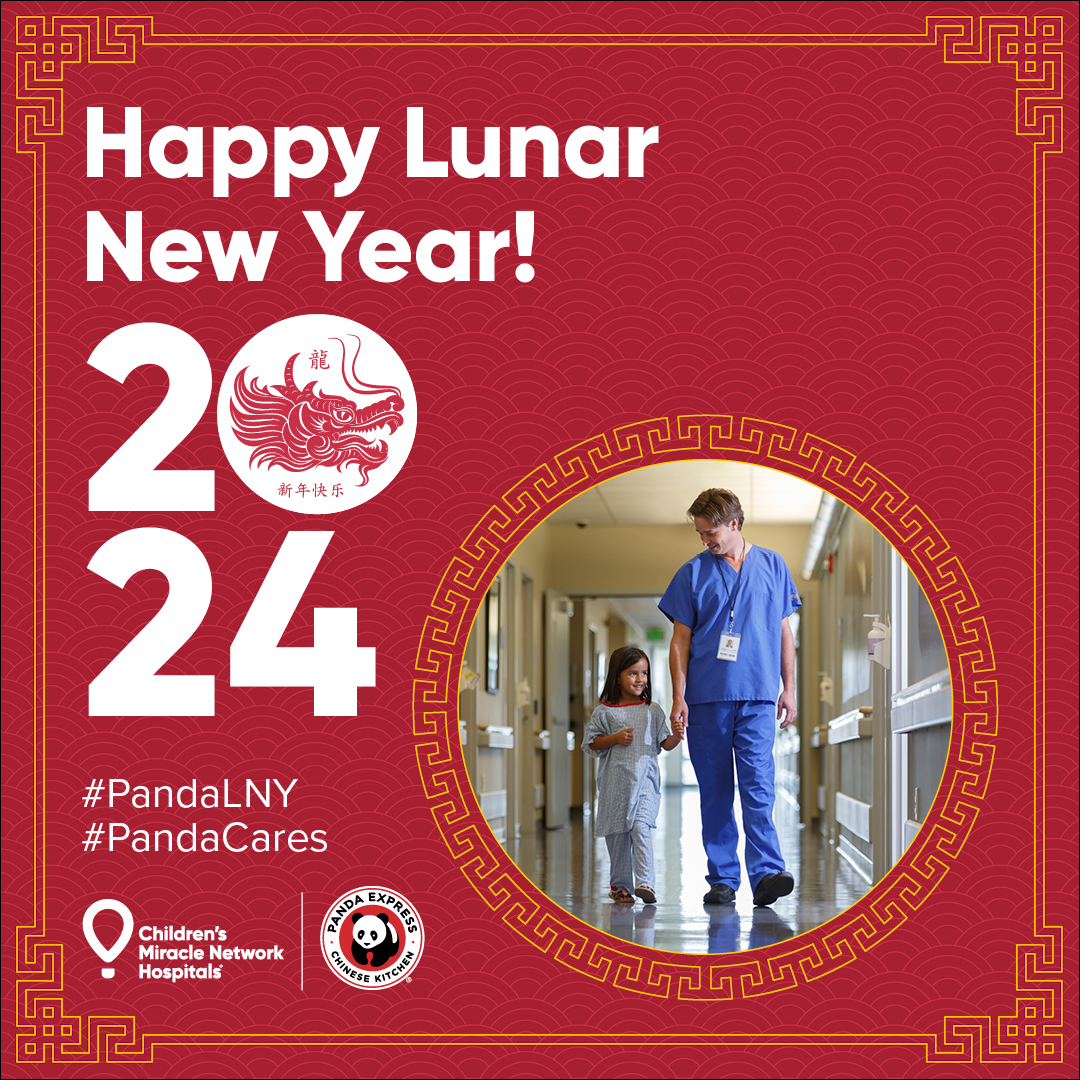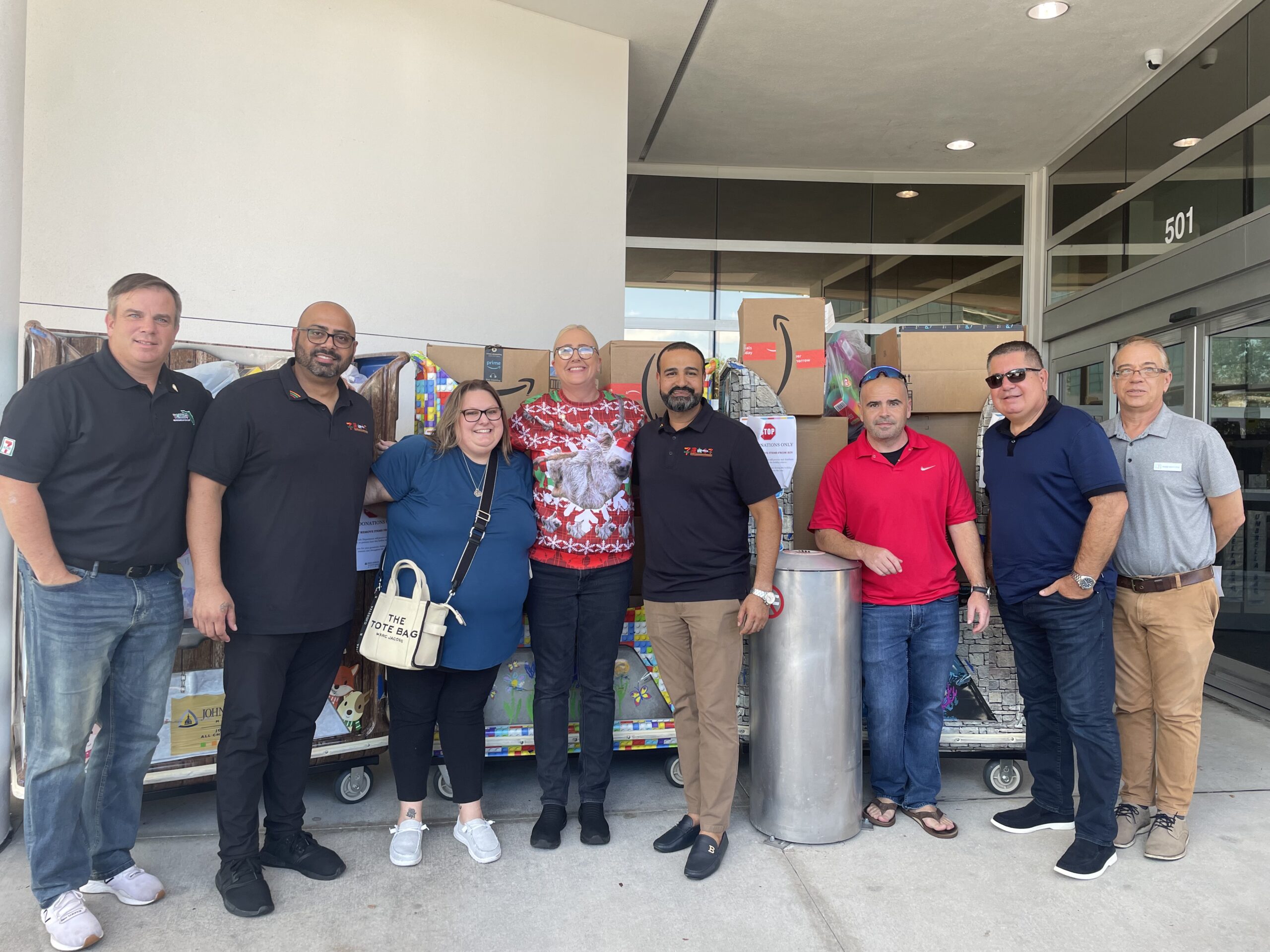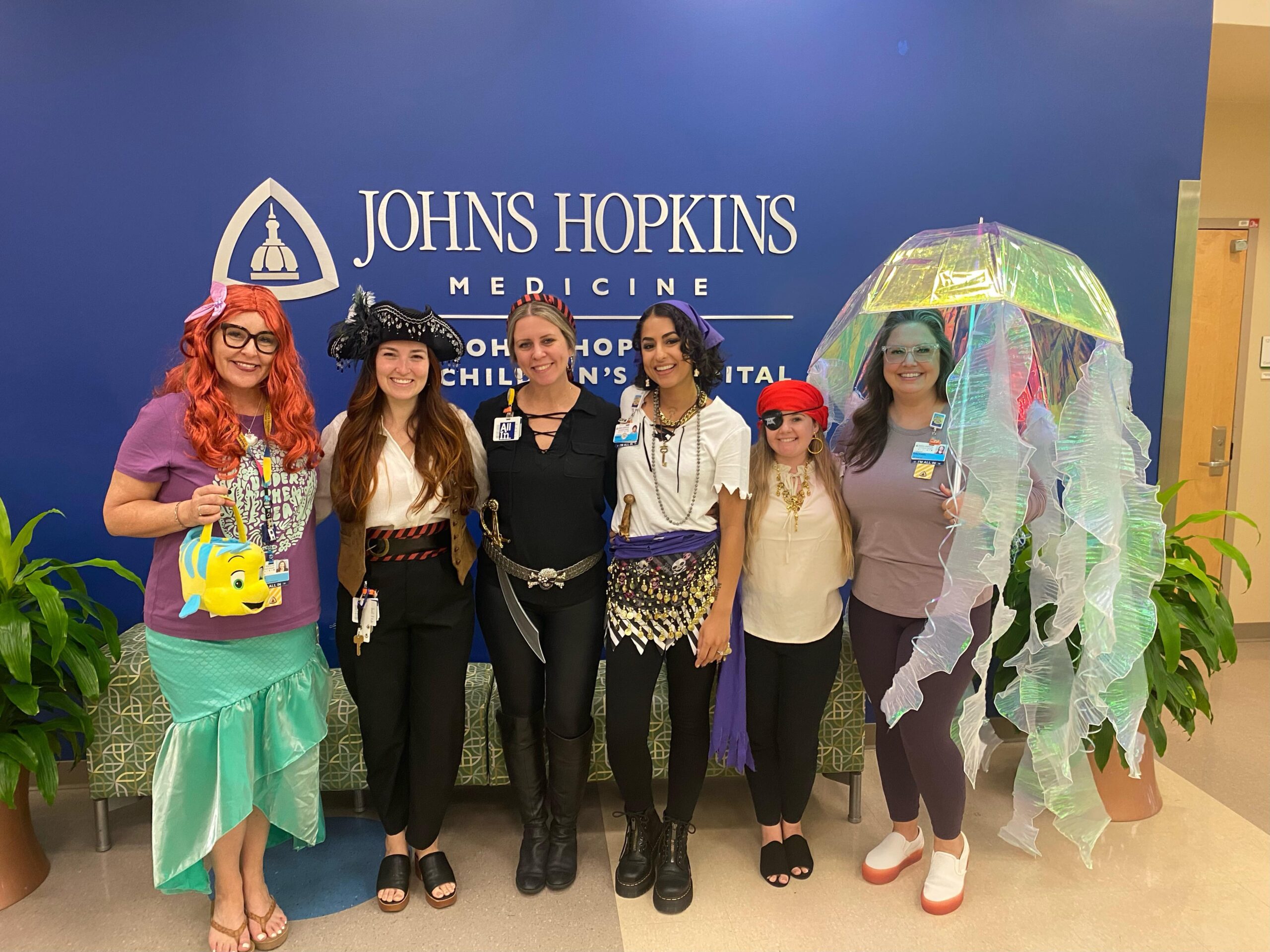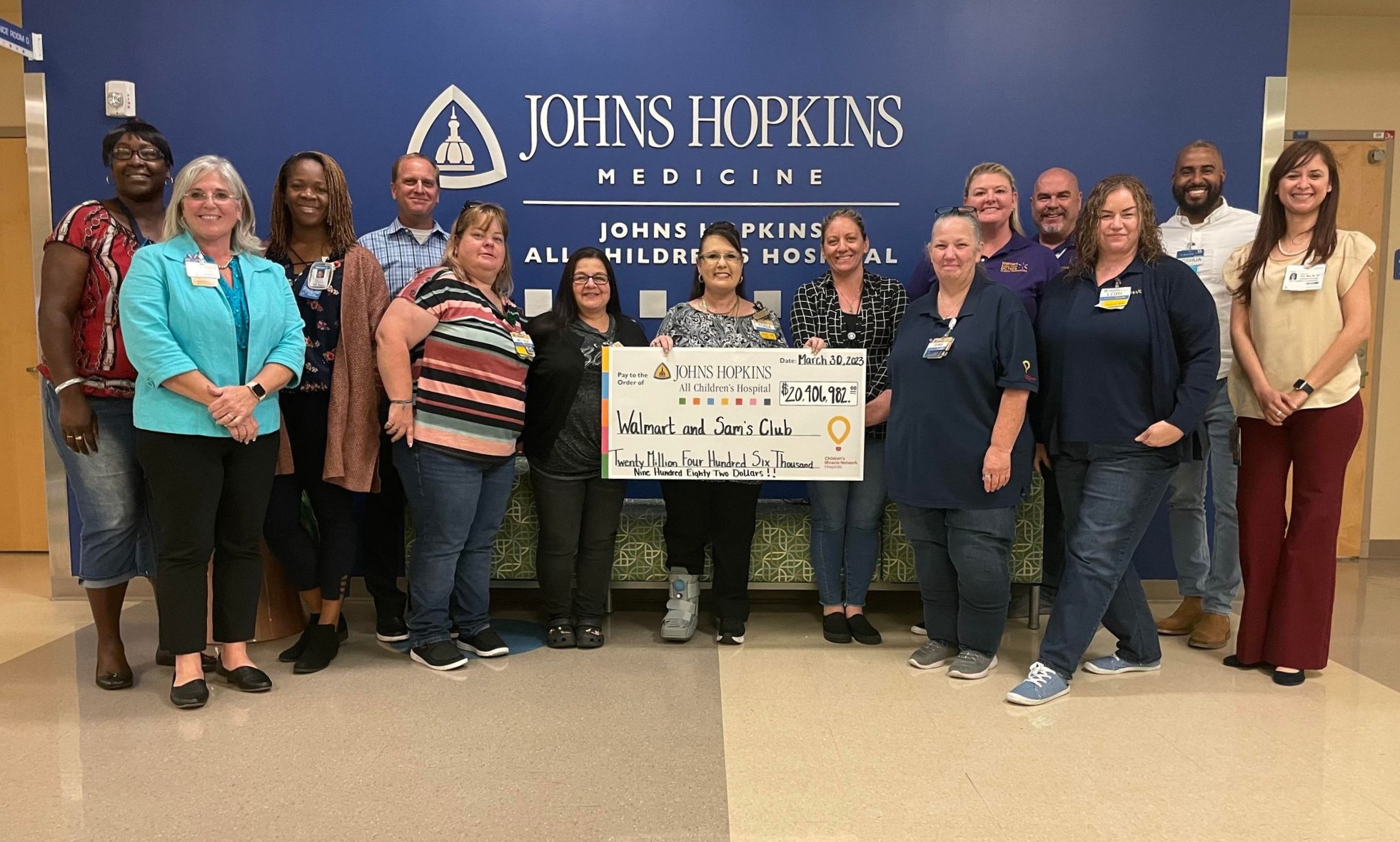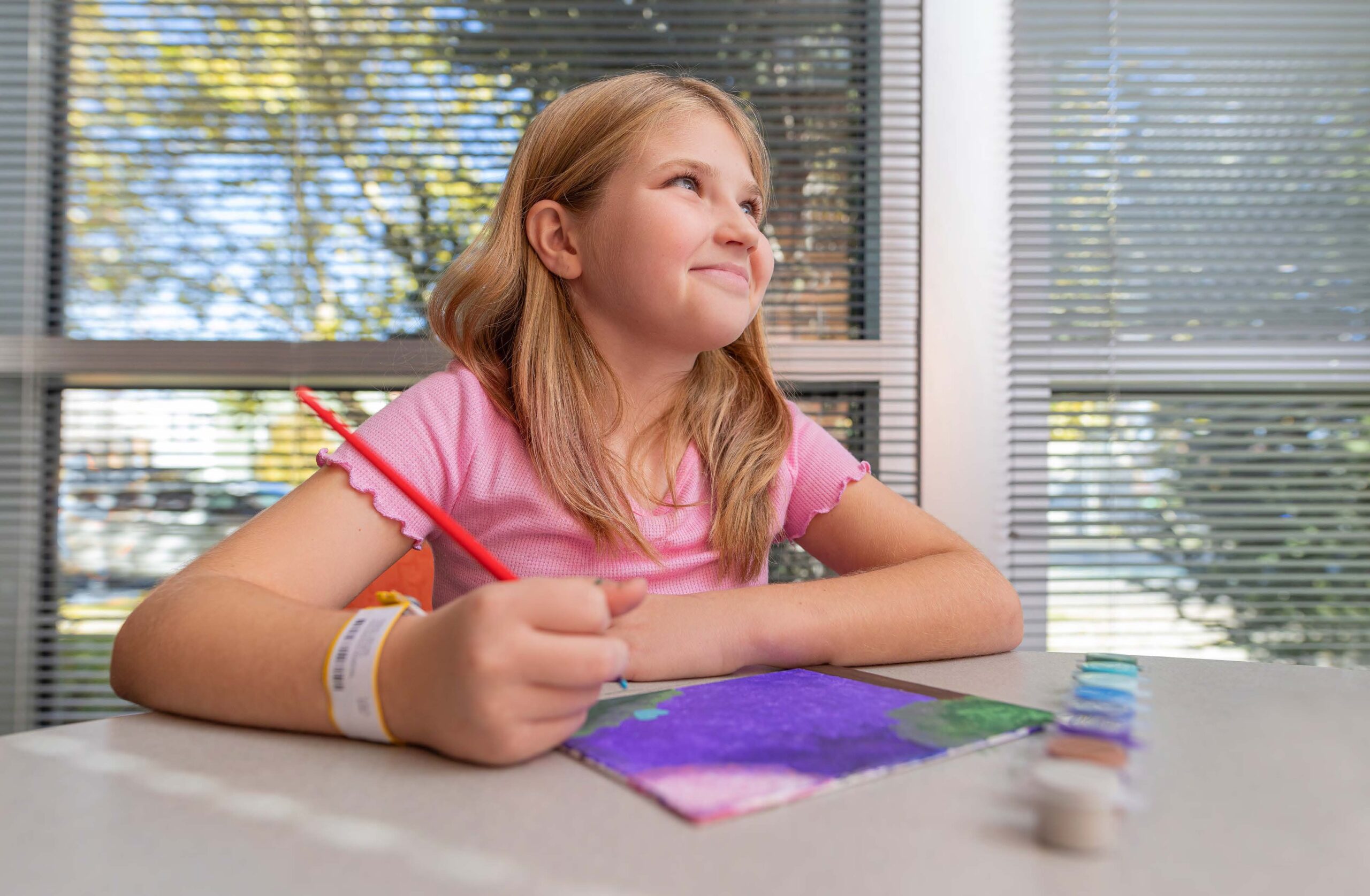New Building Opens Door to Discovery
From certain angles, the windows of the new Johns Hopkins All Children’s Research and Education Building reflect both the hospital and the Outpatient Care Center, capturing the inclusive and collaborative nature the structure is designed to promote.
The $95 million, 225,000-square-foot building was publicly unveiled during a ribbon cutting ceremony Thursday on the hospital’s campus in St. Petersburg, Florida. The ceremony drew more than 700 people from the hospital staff and the community and featured St. Petersburg Mayor Rick Kriseman; Dean Paul Rothman, M.D., the CEO of Johns Hopkins Medicine; Kevin Sowers, president of the Johns Hopkins Health System; Jonathan Ellen, M.D., president and vice dean of Johns Hopkins All Children’s Hospital, and other dignitaries. Many community and staff members were able to tour the building before or after the ceremony.
 “It’s more than a building,” Ellen says “This is a vision brought to life by a community that we believe can change the world.”
“It’s more than a building,” Ellen says “This is a vision brought to life by a community that we believe can change the world.”The Research and Education Building houses the hospital’s institutes, its graduate medical education and simulation programs, an expanded biorepository and a new team of fundamental scientists who will seek to understand the origins of diseases and how to prevent them.
“The capabilities we are creating in this building—and, more important, the world-class physicians, surgeons, researchers and staff who will work there—will help us achieve the mission we set out to do,” Ellen says, “which is to lead the country in discovery and translational research that can lead to better health for children.”
Rothman says it all started with an integration of the hospital into Johns Hopkins Medicine in 2011.
“I think back to the vision of the board of trustees of All Children’s Hospital,” he says. “About 10 years ago, they decided they wanted to make All Children’s one of the top academic children’s hospitals in the country. That was a bold vision to think about what was possible.”
The architecture includes “forum stairs” designed for sitting and chatting, The Peabody restaurant intended to promote informal exchanges of ideas and other flexible and collaborative areas to facilitate interaction. (The Peabody, which shares ownership with Tampa’s Oxford Exchange, will open to the public on Friday.)

The Office of Medical Education will have additional space to accommodate its expanding programs. Johns Hopkins All Children’s has residency programs with both the Johns Hopkins University School of Medicine and the USF Health Morsani College of Medicine along with a growing number of fellowships.
Jennifer Arnold, M.D., M.Sc., FAAP, joined as medical director of the simulation program in 2017 and designed the building’s expansive Center for Medical Simulation and Innovative Education, which has spaces to replicate operating rooms, patient rooms and even an elevator.
The hospital’s research program anchors multicenter clinical and translational studies such as KIDS-DOTT, which focuses on thrombosis, and Prospective Research on Early Determinants of Illness and Children’s health Trajectories (PREDICT). With the new building, Johns Hopkins All Children’s added a group of top-level basic scientists who are members of or affiliated with the new Institute for Fundamental Biomedical Research.
The building includes 40,000 square feet of total lab space with 27,000 devoted to wet labs. The bench space in labs is flexible to enable reallocation of space as priorities change.
“The Research and Education Building brings scientists and clinicians together to solve problems,” Ellen says. “In the not-too-distant future, when we fully understand these relationships between the genes and the environment, we believe pediatricians will have a whole new repertoire of things they can do to prevent diseases in children and adults.”
